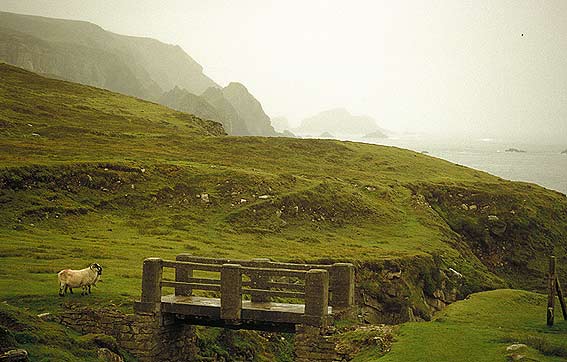The Goddess floated on the Sea of Darkness;
the Eyes of our Great Mother, closed, imagining. Behind the meditative lids was
a fiery whirlwind- arcane chaos, beautiful mystery! The limitless Mind imagined
all potential existence. Behind the Eye of God was a symphony of raging energy-
a sound like infinite, vibrating violin strings in a stormy ocean. The Light,
the infinite Knowledge that is an idea in our Great Mother’s Mind became our
existence.
The Paleolithic Era
Thousands of years ago it was the Goddess that was worshiped It was female energy that sustained the Earth and its inhabitants. Like the moon goes through cycles, so does Woman, which seems to connect her to the energy of the Earth and tides. All over the world, archaeologists have unearthed female figurines and carvings, such as these:
 |
| prehistoric petroglyph found in a Utah cave |
 |
| Willendorf, Austria 30,000-25,000 B.C. Paleolithic |
 |
| Aztec goddess |
 |
| Prehistoric Nile Goddess |
 |
| Isis giving birth |
 |
| Indus Valley 3rd-2nd Millenium B.C |
 |
| Dreamer of Malta 3000 BCE |
 |
| Laussel, France 22,000-18,000 B.C.E. |
 |
| Sheel na gig Celtic fertility goddess of death and rebirth 11th Century |
 |
| Paleolithic carving seeming to represent the vuvla |
Modern scholars believe these statues and images to be related to fertility rites sacred to men and women. Thousands of years ago, from the
Paleolithic to the mysterious eras of Crete and Atlantis, women were revered for their life-giving powers-their vagina being "the portal through which a child enters the world" (E.O. James, religious historian,
The Chalice and the Blade). It was believed that once a person dies they can return to life by being reborn through the vagina. Blood was a symbol of life, therefore the female's menstrual cycle was mysterious and sacred. Archaeologists have discovered ancient Cro-Magnon burial sites in France, where, around the skeletal remains, are cowrie shells covered in red ocher, a symbol of the vagina and menstrual blood, so the deceased could be revitalized by the woman's life giving blood.
Acts of sex and giving birth were sacred and revered until the men of the Catholic Church began writing history, saying that Eve was the one to blame and therefore her, and all women bore after her, are the carriers of the "original sin," and that she was the one to blame for the downfall of mankind, (1 Timothy 2: 14). Why was the Gospel of Mary buried? During the Council of Nicea it was decided which Biblical texts would be written as God's word and which would be banned. Why does the Catholic Church now deny that there was a female pope, Pope Joan? The Scotus' chronicle of the popes mention her, " A.D. 854, Lotharii 14, Joanna, a woman, succeeded Leo, and reigned two years, five months and four days" (The Woman's Encyclopedia of Myths and Secrets, Barbara G. Walker, p. 475).
 |
| cowrie shells, once used as currency and in burial rituals |
Our ancient ancestors seemed to understand the sustaining connection of human life to Nature and animals
around them. Many goddess symbols are of females surrounded by animals, water and trees. Our ancient ancestors seemed to be conscious of all life, a seemingly lost heritage in the 21st century.
The early humans may not have been blood thirsty primitive creatures. If we think about modern hunter-gatherer cultures they rely heavily on vegetation, rice and grains to sustain them. Meat was, throughout modern history, food for the rich, while the peasants begged for a cold shoulder of mutton. Taking a closer look at ancient, Paleolithic art opens more wonder. In his book, Alexander Marshack writes that many line paintings and engravings could be images of Nature, such as trees, branches or reeds. There are images of animals with lines around them that for years, scholars said were arrows, which would be missing their target, why would they paint so many hunting failures One engraving on a bone object was studied a second time after it was said to have a depiction of a harpoon. Under a microscope, the barbs of this harpoon were turned the wrong way and the points of the shaft were also wrong. It was decided, that this image seemed to depict, more correctly, a tree with branches and not a harpoon. I am not suggesting, of
Tcourse that ancient people did not hunt, obviously they did, they carved on bones of animals that they more than likely hunted, however, I am sure that they lived like the Native Americans respecting and using all of the animal for survival.
As Riane Eisler writes in her book, many Paleolithic remains seem to suggest a female centered society- the many female figurines found on every continent, the red ocher found in burial sites and the vagina shaped cowrie shells. These early civilization gave birth, (no pun intended) to more complex , goddess religions, that are represented by powerful female deities such as Isis, Nut, Maat, Ishtar , the Shekina, Mother Mary and of course Mother Earth and Mother Nature.
It was not until Judeo-Christian religions that woman became the "weaker sex" the carrier of "the original sin"... the sex who was condemned by God and not God-like herself. As St. Paul said Eve was the only guilty one, (1 Timothy 2:14). Early Christians destroyed Goddess centered temples and scriptures and deemed the early rituals as works of the devil. The Christian Church declared through Acts 19:27, that the Great Goddess " must be despised and her magnificence destroyed." Christians will defend this saying that it was because Jesus had come and made all other beliefs obsolete. But, could it also have just been a power thing? To gain more land and world influence over the Muslims and Jews of Asia? To keep women from owning land, earning their own money, and making their own decisions about who to procreate with and about giving birth or not and once giving birth, deciding how to raise the child?

















































